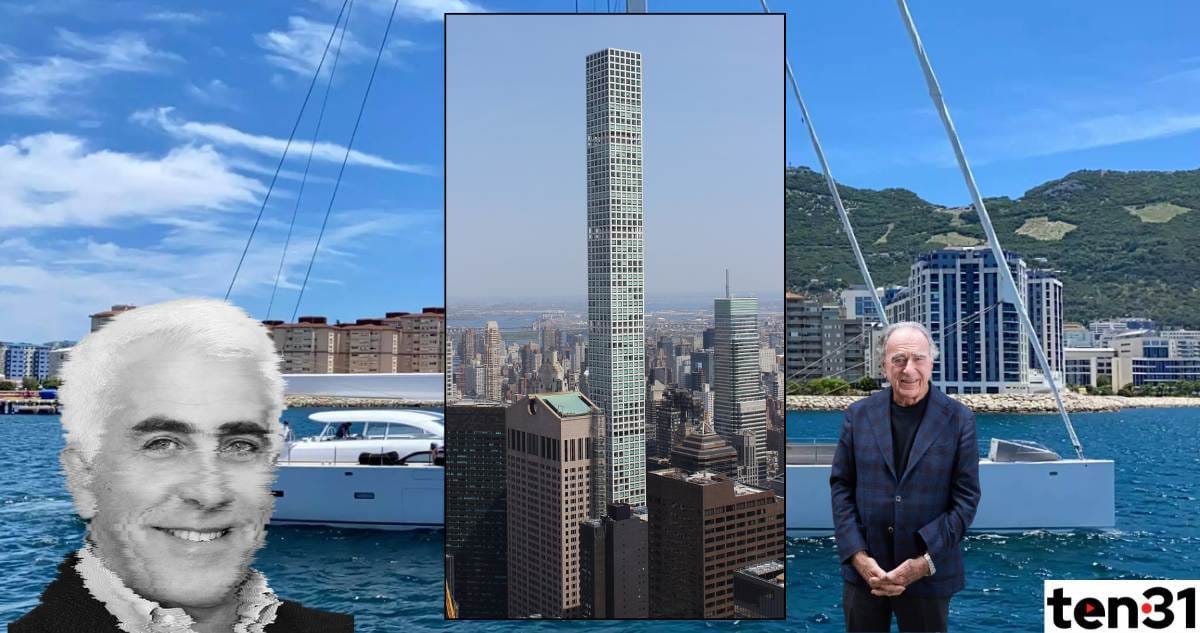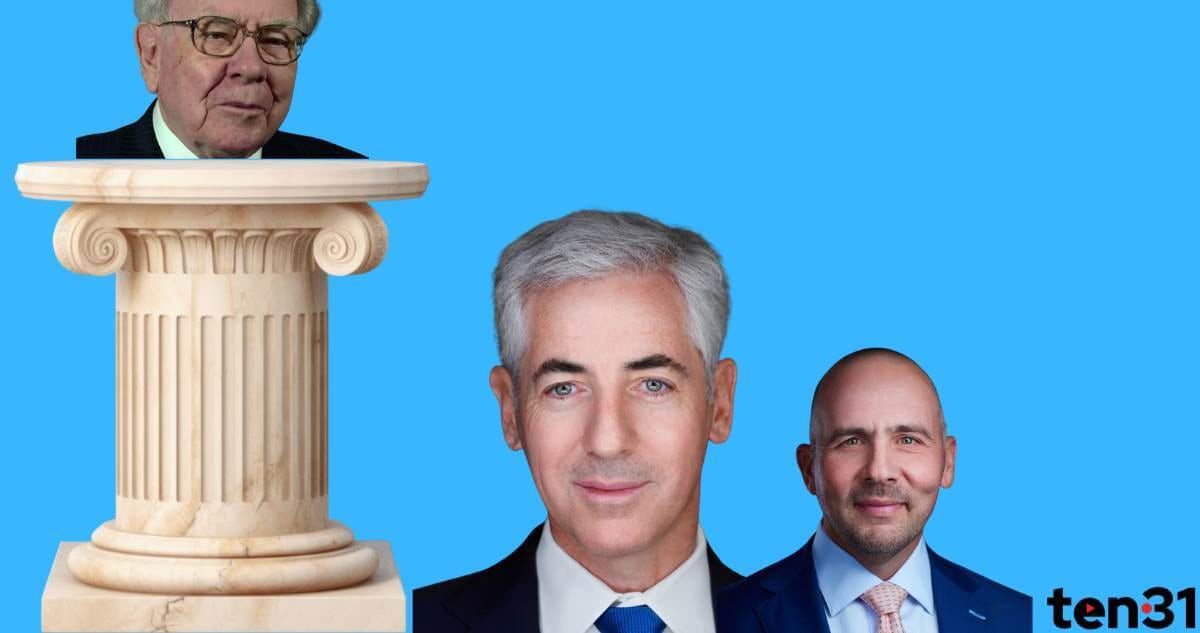Age of Accountability for Supertalls

CIM & Macklowe are facing another big lawsuit over their development of 432 Park (in the background is Macklowe’s yacht, Unfurled)
“You know what the trouble is, Brucey? We used to make shit in this country, build shit. Now we just put our hand in the next guy's pocket.” - Frank Sobotka
Selling a supertall luxury condo is a hyperconcentrated exercise in controlling the narrative. You parade out your starchitect, who speaks of deriving inspiration from the Amazon rainforest or sacred geometry. You have the most charismatic (even if his equity stake is de minimis) member of your development team express how this project – there have been many, but this one is special – is the culmination of a glittering career. And you maniacally guard the building against any bad press and any legal action that can derail the only thing that really matters: sales velocity. Everything a condo developer does is in service of projecting the best possible image to buyers for just as long as it takes to sell the project. Once most deals are closed, lenders are repaid and the promote 😍 is earned, it’s onto the next one.
It’s been over a decade since sales launched at 432 Park, and several cracks – allegedly literal ones, too – have emerged in the narrative. But will it matter?
What's On Tap - May 5
Powered by: AirGarage
Boost your NOI by 23% on average with AirGarage’s full-service parking management solution. Goodbye gate arms & ticket dispensers, hello QR code-based payments and license plate reading cameras. AirGarage offers dynamic pricing based on occupancy levels, increased security with license plate timestamp data, and a smooth, hands-free experience for tenants. Contact us to get a custom proposal for your facility.
Supertalls (Cont.)
The condo board at 432 Park has brought a new lawsuit against the 1,400-foot-tall tower’s developers: CIM Group, which controlled the purse strings & called the shots, and Harry Macklowe, who was the frontman. It alleges that the developers engaged in “deliberate and far-reaching fraud” by not disclosing cracks in the facade that could pose real structural dangers down the road. The main revelation in this new $165M action (h/t Crain’s) is that the developers, having been warned by their engineers & architects, were aware of the structural issues (the suit details nearly 1,900 defects) during construction (2011-2015), but decided to YOLO w/ the aim of “avoiding delays and maximizing profits.” 🙊 (Sales at the tower, which had a projected sellout of $3B+, launched in 2013, and passed the $2B mark in ‘18.)
A related $160M lawsuit brought by the board alleges construction defects that made living at the supertall a nightmare – the NYT’s deep dive into those issues is 💯 worth reading – and is working its way through the courts. But this one, per the board’s attorney Terry Oved, “extends beyond negligence into an alleged calculated scheme, driven by greed, that eroded trust.” It cites a report by the architecture firm of the late Rafael Viñoly, the building’s designer, warning of cracking in the vertical columns and urging a review. The building’s structural engineer also advised developers to “hold the pour” on the concrete – warnings that allegedly went unheeded. The DOB was not informed of any hazardous conditions at the project, a rep for the agency told the NYT. When Macklowe was informed of the cracks, per the suit, he was reluctant to do anything that would mess w/ the tower’s characteristic look. “Macklowe, who was not a concrete expert, argued that an invisible sealant was good enough for his yacht and therefore was good enough for the Building,” the suit states. ⛵
A CIM rep “vehemently” denied the claims and said the firm will move to dismiss the suit. Still, even if the developers prevail, the broader issues brought up here are likely to ripple up and down Billionaires’ Row. Buyers who bought into the vision of vertical luxury utopias disconnected from the great unwashed below are now, about a decade-and-a-half into the corridor’s creation, reckoning w/ the possibility that these things weren’t necessarily built to flourish in the long term. Likely the most insightful comment on the broader issue came via Steven Edgett, an elevator consultant who told Curbed that “once you get over 40 stories, every one of these towers is a prototype. You don’t have repeatable results because the shape of the building changes the performance.” One structural engineer went further, alleging what he termed structural corruption. “It’s the way development operates in New York,” he told the publication. “The people who put up the buildings are not accountable for their quality. As long as problems don’t crop up before they unload the property, they can do whatever they want.”
Bonus: Our deep pod dive on Gary Barnett: The Father of Billionaires’ Row 🐐
Ackman’s Baby Berkshire Playbook

Bill Ackman upped its Howard Hughes stake to 47% – and hopes to turn it into a BH-type holdco
Bill Ackman, the silver-haired, silver-tongued edgy hedgie w/ a talent for dominating whatever topic is in the national zeitgeist, is back in the CRE spotlight. He’s finally closed a $900M deal to up his stake in Howard Hughes 🧑✈ to 47%, after protracted negotiations w/ the megadeveloper. Ackman is paying a 48% premium to Friday’s share price, and envisions a far grander future for a firm best known for master-planned community bets (and in NYC, some misadventures in the Seaport District): Ackman wants to turn Howard Hughes ($3.4B market cap) into a baby Berkshire ($1.1T market cap) of sorts, a holdco that makes bold bets on both public & private firms. He referred to the Oracle of Omaha as “one of my most important heroes, certainly in business and I would say in life,” 🦸 and told CNBC that acquiring/building an insurance company is “highly likely.” This is not Ackman’s only recent adventure in CRE, of course: his Pershing Square recently upped its stake in Brookfield (the 2 firms have had their moments) and is one of the loudest voices in the push to privatize Fannie & Freddie.
Bonus: We broke down the hella complex business of master-planned communities in a recent pod
Traveling HFC Ticker: Restraining Orders & Killer Bills

Traveling HFCs are under multi-front legislative and judicial assault
Quick check-in on the state of Traveling HFCs, property-tax absolving vehicles in Texas that have become a magnet for distressed syndicator deals and spawned a cottage industry of lawyers, consultants & “nonprofits” (if new to this riveting story, see The Promote’s definitive coverage here, here & here): A judge granted Hays County TROs 🛑 against 2 of the most active HFCs in the game, Pecos & Pleasanton, stating that “they are pulling hundreds of millions of dollars in property off our tax rolls—money we depend on to fund public safety, health, and other essential services.” Wonder if the ruling will spawn copycat ones in other counties sick of what critics describe as a pillaging of the tax rolls by rando entities in the boonies. Meanwhile, 2 bills aimed at curtailing the use of Traveling HFCs are working their way through the state legislature: HB 1585, which seeks to crack down on the use of extraterritorial HFCs, is the more likely one to pass, according to sources. However, SB867, a more radical crackdown on the practice that would mandate sponsor co-investment, tighten AMI limits and put a 2Y fuse on deals, is likely to languish until the next legislative sesh – i.e. 2027.
Quickies
Piastri may have taken the 🏁, but the real Miami F1 winner is Steve Ross



